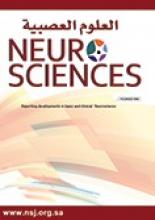Abstract
OBJECTIVE: To present the incidence, morphology, and the relationships of the accessory head of the flexor pollicis longus (Gantzer’s) muscle (AHFPL) in a recent Turkish population.
METHODS: The study was performed on 52 upper extremities of 26 adult Turkish cadavers in the Department of Anatomy, Ege University Faculty of Medicine, Izmir, Turkey in 2005. In our dissections, the prevalence and anatomical morphology of the AHFPL including muscle shape, origin and insertion point, and its relation to the anterior interosseous nerve (AIN) was examined.
RESULTS: The AHFPL muscle was found in 27 upper extremities (51.9%). It was bilateral in 10 cadavers (74%), and unilateral in 7 cadavers (26%). The muscle shape was spindle in 19 (70.4%), and papillary in 8 (29.6%). The AHFPL originated from the coronoid process of the ulna in 22 upper extremities (81.5%), and the medial epicondyle of the humerus in 5 cases (18.5%). The AIN passed anterior to the AHFPL in one case (3.7%), lateral in 3 (11.1%), posterolateral in 8 (29.6%) and posterior in 15 (55.6%) cases.
CONCLUSION: The knowledge of the morphology and the topography of the AIN and AHFPL is important for understanding the mechanism of the AIN syndrome. The results of this study show the mechanical compression due to the AHFPL may be a cause of the pronator and AIN syndromes.
- Copyright: © Neurosciences
Neurosciences is an Open Access journal and articles published are distributed under the terms of the Creative Commons Attribution-NonCommercial License (CC BY-NC). Readers may copy, distribute, and display the work for non-commercial purposes with the proper citation of the original work.






